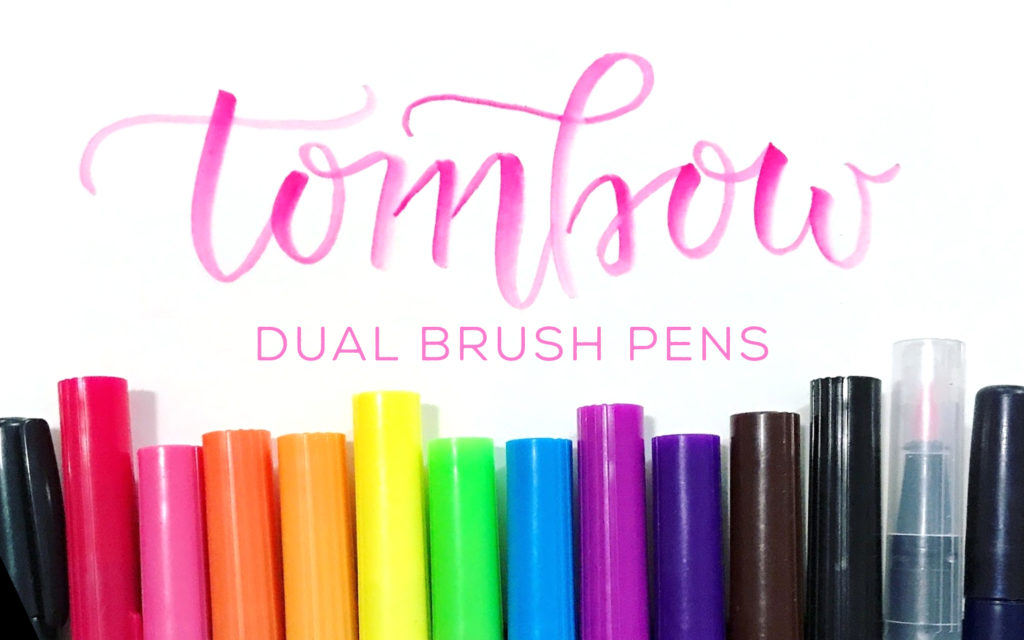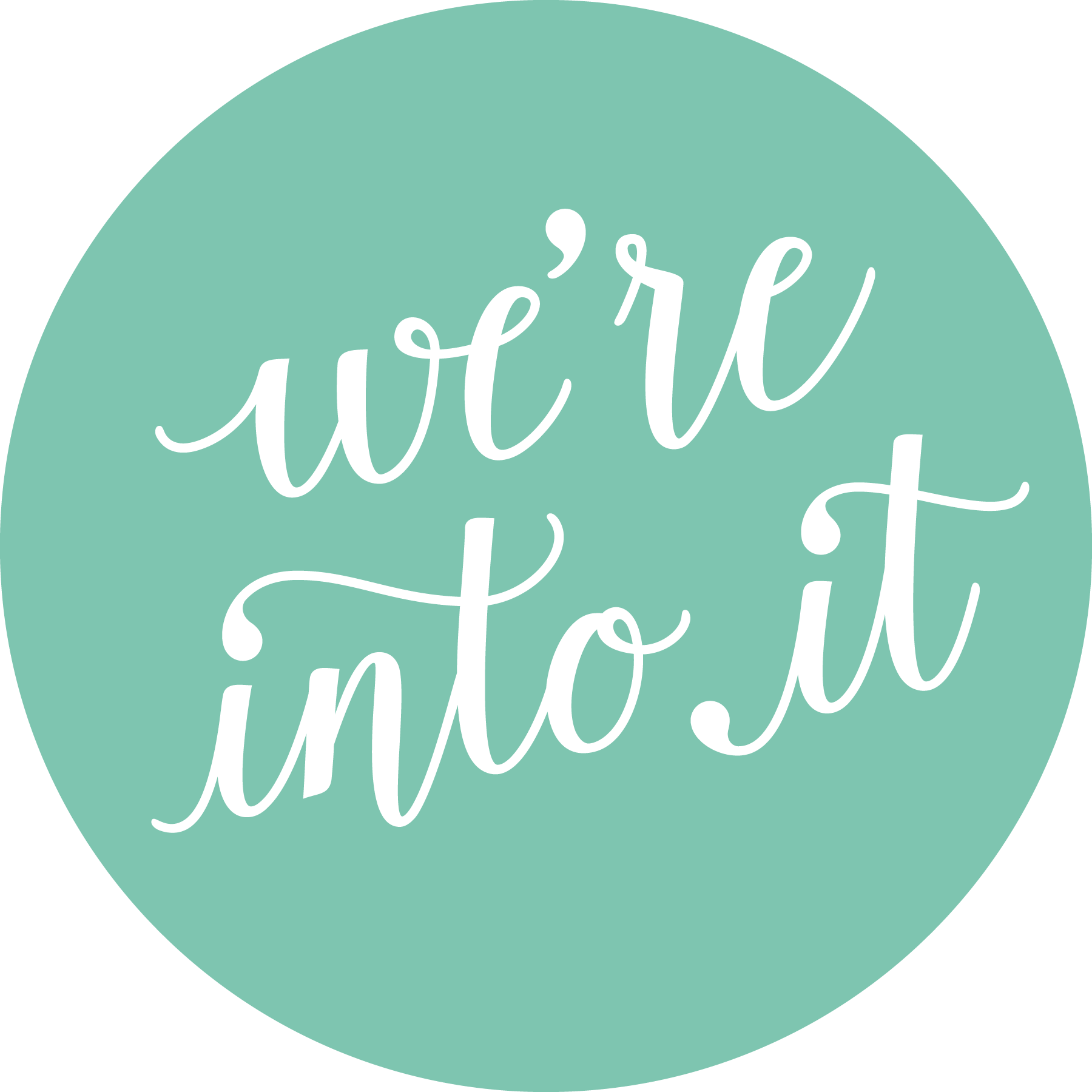Pen Review: Tombow Dual Brush Pens
Tombow Dual Brush Pens may be the most well known brush pens on the market. They can be found in nearly any arts and crafts store, and even sometimes in specialty shops that don’t carry other products related to brush lettering or calligraphy. As such, they’re obviously very popular for their availability. We recommend them as a great beginner pen, and always give one to our students at our lettering workshops. But we also still love them as long-time brush letterers! Here’s a little bit about the pens themselves, what we use them for, and why we love them!

Size & Stroke
The brushes on the Tombow Dual Brush pens are a medium size, with a fairly flexible tip. The ink flows smoothly, dries quickly (no smudges on our beautiful lettering pieces please and thank you!), and doesn’t bleed. They also have a regular fine marker tip on the opposite end, which comes in handy for touch ups and swashes. The shaft is fairly long, which gives your hand a lot of room to pull back and create more expressive and gestural strokes.

Thick downstrokes using these pens can get up to about 1/4″ thick. The brush tip really has a good capacity for a thick stroke when you’re pressing in through the side of the tip! Yet thin upstrokes are still easy to achieve by applying less pressure. We like to use these pens for medium scale brush lettering, like short word combinations and quotes. It’s much more difficult to use these pens on a smaller scale, like envelope addressing, so we don’t recommend them for that.

Colors & Blending
These pens come in SO MANY COLORS! 96 to be exact! There’s not another brush pen out there with so many color options. And some of them are straight up drool-worthy. (Yes, pens make us drool).


The water-based ink is also ideal for blending. Aka creating varying shades and that ever beautiful ombré effect. In fact, most basic sets of these pens even come with a clear pen, called the blender. But blending can be done in a few different ways.
One of our favorites is by using one pen to apply color directly to the tip of a different color brush tip. Applying a color ink to the tip of the clear pen (like pink below), creates an ombré effect where the color slowly gets more translucent. Similarly, you can apply a colored ink to a different color pen to create a transition stroke through different color combinations (the blue ink on the yellow pen below created the varying green to yellow effect). To restore your pens to their original color, simply use the pen until the applied ink color is colored out.

 The pens will also blend quite easily on top of paper. Start drawing with one color, and then layer over another. The lighter colored brush tips will pick up the darker colors and carry the color through as you continue to write. Another tactic is to write with two different colors touching, but not layered, and use the clear blender pen to combine the two. The blending possibilities are really quite varied. Just be careful – too many layers of ink can start to break apart the paper fibers!
The pens will also blend quite easily on top of paper. Start drawing with one color, and then layer over another. The lighter colored brush tips will pick up the darker colors and carry the color through as you continue to write. Another tactic is to write with two different colors touching, but not layered, and use the clear blender pen to combine the two. The blending possibilities are really quite varied. Just be careful – too many layers of ink can start to break apart the paper fibers!
Durability
We haven’t had an issue with the Dual Brush Pens running out of ink quickly, they have been very long lasting for us. However, we have noticed that the nylon tip can have a tendency to fray. You’ll start to notice on your thins that the stroke may begin to appear less smooth or have a wispy texture. Typically this will happen from writing on rough or toothy paper, but even regular computer paper can be tough on the brush tips. We’d recommend using smooth, coated paper to help keep your pen tips at their best quality (for these as well as all brush pens)!
In Action
And here are some examples of these bad boy Tombow Dual Brush pens in action. We often carry a few of these pens in our bags for lettering on the go. If you’re looking to do medium sized lettering in a variety of colors, then these are the pens for you! Do you love these pens as much as we do!?
All designs shown here were created by We’re Into It. All photography is our own except where credit is given.


0 Comments